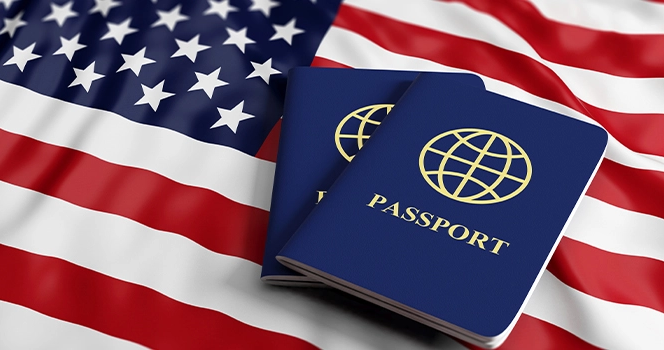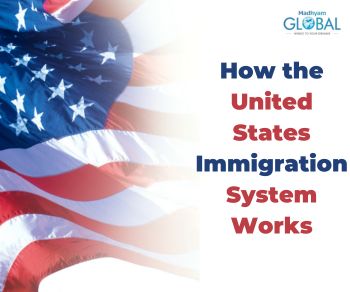Principles of U.S. Immigration Law
U.S. immigration law is built upon foundational principles that shape policies and systems. These principles balance humanitarian, economic, and social goals, ensuring that immigration aligns with national interests and values. The four main pillars of U.S. immigration law are:
- Reunification of Families: This principle emphasizes keeping families together. U.S. citizens and Lawful Permanent Residents (LPRs) can sponsor eligible family members to immigrate to the United States.
- Economic Contributions: Employment-based immigration facilitates the entry of skilled workers to fill labor market gaps, fostering economic growth and innovation.
- Humanitarian Protections: U.S. immigration law provides avenues for individuals fleeing persecution, such as asylum and refugee programs, reflecting the country’s commitment to humanitarian values.
- Diversity: The Diversity Visa Lottery ensures that the U.S. welcomes immigrants from underrepresented regions, enriching its cultural and demographic landscape.
Family-Based Immigration
Family-based immigration is a cornerstone of the U.S. immigration system. It allows citizens and LPRs to sponsor close relatives, fostering family unity and social stability.
Immediate Relatives
Immediate relatives of U.S. citizens—including spouses, unmarried minor children, and parents—have priority access to immigration. There are no annual caps for this category, ensuring a streamlined path for these close family members.
Family Preference Categories
Extended family members of U.S. citizens and LPRs fall under the family preference categories, which have annual visa limits. These categories include:
- Unmarried adult children of U.S. citizens (F1).
- Spouses and minor children of LPRs (F2A).
- Unmarried adult children of LPRs (F2B).
- Married adult children of U.S. citizens (F3).
- Siblings of U.S. citizens (F4).
Key Numbers
The family-based immigration system operates with the following numerical guidelines:
- A minimum of 226,000 visas are allocated annually for family preference categories.
- Immediate relatives often exceed 254,000 visas annually, indirectly impacting the allocation for family preference categories due to overall visa limits.
Employment-Based Immigration
Employment-based immigration serves to strengthen the U.S. economy by addressing labor shortages, attracting talent, and fostering innovation. It encompasses both temporary and permanent visa options.
Temporary Visas
Temporary employment visas cater to specific roles and durations. Notable categories include:
- H-1B Visa: For professionals in specialty occupations requiring a bachelor’s degree or higher.
- L-1 Visa: For intra-company transfers, allowing employees of multinational companies to work in the U.S.
- O-1 Visa: For individuals with extraordinary ability in sciences, arts, education, business, or athletics.
- H-2B Visa: For non-agricultural seasonal workers.
- TN Visa: For Canadian and Mexican professionals under NAFTA/USMCA.

Permanent Visas
Permanent employment-based immigration is limited to 140,000 visas annually, divided among five preference categories:
- EB-1: For individuals with extraordinary ability, outstanding professors and researchers, and multinational executives.
- EB-2: For advanced degree holders or individuals with exceptional ability in their field.
- EB-3: For skilled workers, professionals, and unskilled workers filling labor market needs.
- EB-4: For special immigrants, such as religious workers and certain international employees.
- EB-5: For investors who create jobs in the U.S. through substantial financial investments.
Key Considerations
The demand for employment-based visas often exceeds supply, leading to backlogs, particularly for nationals of certain countries like India and China. Additionally, per-country caps aim to ensure equitable access to these visas.
Naturalization
Naturalization is the process by which LPRs can become U.S. citizens, granting them full rights and privileges, including voting and access to federal jobs. Citizenship is voluntary but offers significant advantages.
Eligibility Requirements
To qualify for naturalization, an LPR must:
- Reside in the U.S. for at least five years (or three years if married to a U.S. citizen).
- Demonstrate good moral character.
- Pass an English and civics test.
- Swear allegiance to the United States.
Naturalized citizens enjoy additional protections, such as immunity from deportation and the ability to sponsor more family members for immigration.
Humanitarian Programs
The U.S. immigration system includes provisions for individuals facing persecution or crises in their home countries. These programs underscore the nation’s humanitarian commitments.
Refugees
Refugees are individuals who flee their countries due to fear of persecution based on race, religion, nationality, political opinion, or membership in a particular social group. The U.S. collaborates with the United Nations High Commissioner for Refugees (UNHCR) to identify eligible individuals.
- There is no annual cap on refugee admissions, but the U.S. sets yearly quotas based on global circumstances and domestic capacity.
- Refugees must undergo rigorous vetting before resettlement.
Asylum Seekers
Asylum seekers apply for protection upon arrival in the U.S. or after entering. Eligibility criteria are similar to those for refugees. If granted asylum, individuals can live and work in the U.S., eventually applying for LPR status.
Temporary Protected Status (TPS)
TPS is granted to nationals of countries experiencing crises such as armed conflict, natural disasters, or other extraordinary conditions. TPS provides temporary residence and work authorization but does not lead to permanent status.
Diversity Visa Lottery
The Diversity Visa (DV) Lottery program aims to diversify the immigrant population in the U.S. by offering visas to individuals from countries with low rates of immigration. Key features include:
- Allocation of 55,000 visas annually.
- Random selection process, with strict eligibility requirements.
- Applicants must meet education or work experience criteria.
The DV Lottery fosters cultural enrichment and strengthens the U.S.’s global connections.
Key Challenges and Reforms
The U.S. immigration system faces several challenges, including visa backlogs, administrative delays, and debates over undocumented immigration. Potential reforms include:
- Addressing Backlogs: Streamlining processing for family and employment-based visas to reduce wait times.
- Modernizing Systems: Adopting advanced technology for efficient case management.
- Comprehensive Immigration Reform: Balancing border security with pathways to legalization for undocumented immigrants.
Conclusion
U.S. immigration law reflects the nation’s values of family unity, economic growth, humanitarian compassion, and cultural diversity. While the system has its complexities and challenges, it continues to serve as a beacon of opportunity and hope for individuals worldwide. Ongoing reforms and adaptive policies are essential to ensure that the system remains fair, efficient, and aligned with national interests.


